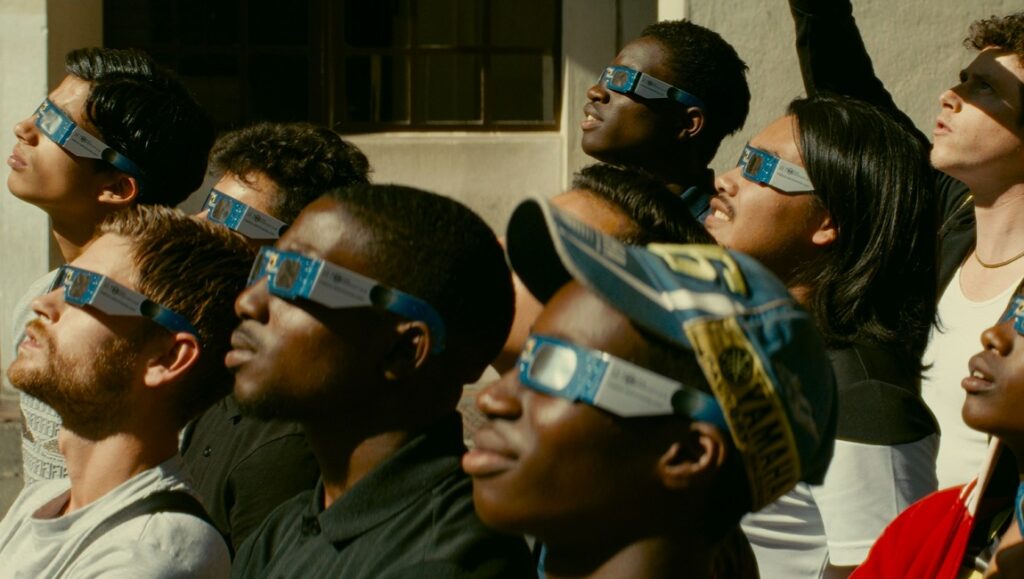Gagarine is a small film, but one impressive in the balance of wonder and stark melancholy it conjures.
Against the harsh realities of time and neglect, the idealism of the 1960s has all but entirely faded. Brutalist apartment blocks and optimistic notions that social housing could provide a better way of living seem almost like relics now, and the buildings from this era that have survived are crumbling from within, often on the verge of demolition. Gagarine follows Youri, a sixteen-year-old boy who has lived his entire life in one such block on the outskirts of Paris, in Gagarin Towers, which is now slated to be torn down to make way for a gentrified set of luxury apartments. In his desperation, Youri first tries to become a one-man renovation team, repairing the building just enough to save it from being condemned, but when his attempt fails, Youri dives into a fantasy world, remaining in his beloved building until the very end.
What distinguishes Gagarine is its earnest love for the urban, and directors Fanny Liatard and Jérémy Trouilh walk a fine line, at constant risk of romanticizing the poverty that consumes Gagarin Towers. But between Alséni Bathily’s compelling lead performance and cinematographer Victor Seguin’s magnificent work in depicting urban landscapes, Gagarine stays almost entirely on the right side of that line. As Youri, Bathily does a remarkable job in managing to sustain the sense of wonder that animates the film while also grounding the character’s emotional reality even amidst the film’s more fantastical elements. It’s a distinctly raw performance, his character at times more open wound than person, and his desperation to save the towers conveys a vulnerability that is often heartbreaking to watch. But Liatard and Trouilh counter this melancholy and soften its starkness, allowing Gagarin Towers to indulge a kind of magical realism that affords Youri a space to surrender to the fantasies of his childhood. Following a mass exodus from the building, Youri is one of only a handful of occupants to stay in the apartment complex, and as the space first shifts from being a flawed home to a liminal utopia and then into an uncaring wreck, there’s a sense of empowerment found in the idea of the building’s inevitable destruction. In the face of the unpreventable, individuals are allowed power again, and though the film never glorifies poverty, Liatard and Trouilh offer supposition that living outside the bounds of mainstream society can have its benefits.
Seguin, for this part, captures each stage of Gagarin Towers’ evolution, filming urban geography and austere architecture with the same affection that others might reserve for sweeping rural vistas, making the towers a character in their own right. Seguin’s compositions expertly capture and communicate the haunted sensibility of Gagarine: in one shot, the reflection of the towers in a car window almost blocks out Youri’s profile, confined entirely to his silhouette, and conjures a ghostly impression even while the towers still stand. Indeed, it’s only when the deterioration of Gagarin Towers becomes severe enough to puncture Youri’s fantasies that Seguin allows the decay to begin taking hold of the images. In this way, despite a relatively thin script, Gagarine conjures wonder and melancholy in equal measure, offering a hopeful look at both life on the margins and life at the end of the world — or a world, at least — without ever devolving into the saccharine, managing to sift through an old, decaying entity to unearth the buried dream that might just outlast it.


Comments are closed.